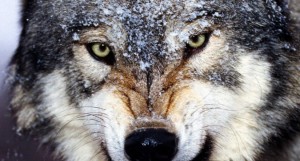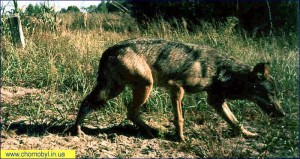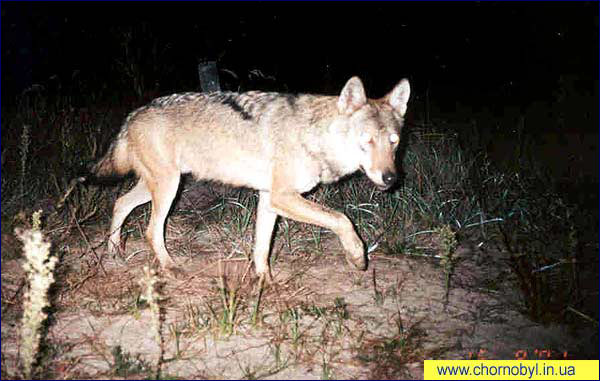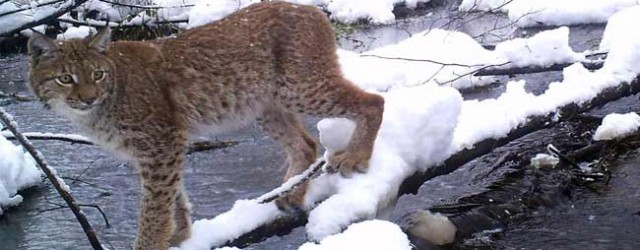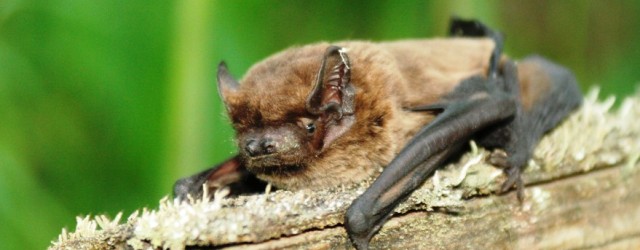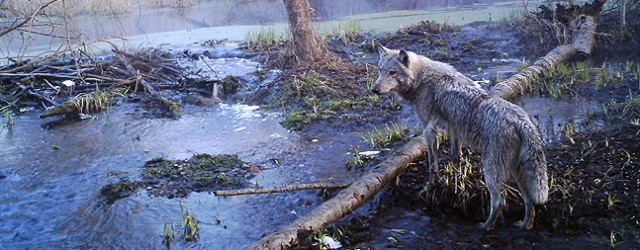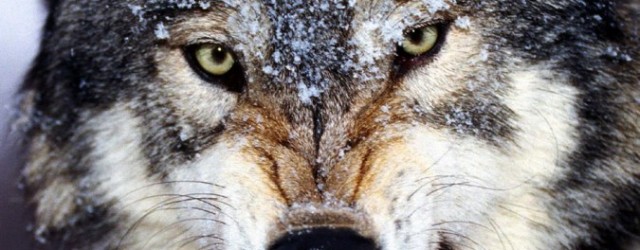
The number of wolves in the Chernobyl Exclusion Zone is believed to increase gradually, which is caused by the absence of humans, as the limiting factor, as well as a good food supply for this predator. Despite lack of records, it is believed that there may be up to 200 wolves in the Zone at present.
Short video about wolves in Chernobyl Exclusion Zone. Winter 2009.
If you liked the video – take part in its promotion. You can support it’s video, by assessing its rating.
Video about wolves on the territory of Chernobyl Exclusion Zone
Wolf on the territory of exclusion zone.
Below are photos of wolves in the Exclusion Zone that were taken via automatic photo shooting of animals.
The state of the wolf population in the Exclusion Zone
The services of the Exclusion Zone note that the number of wolf families grows, as well as the number of wolf packs. According to zoologists studying the neighboring territories of the Belarus Exclusion Zone (Pripyat Radioecological Preserve) the wolf population density may be up to 0.8 wolves per 1,000 hectares of territory. In Ukraine (at the Polesye), the population density varies from 0.04 to 0.58 wolves per 1,000 hectares. The territory of the Polesye considered the most densely populated by wolves is the Exclusion Zone.
In the 1990s of the last century, this predator was being shot off in the Exclusion Zone. Every winter forest guards from company “Chernobylles” (Chernobyl Forest) shot about 20 animals. The biologists estimated the shot wolves to be fairly large. They weighed around 50 kilograms. The content of their stomachs was examined. Three animals out of five had an empty stomach, the rest had the remains of wild boars and roe bucks in their stomachs. The average weight of the stomach content was around one kilogram.
According to Belarus scientists wild boars constitute the biggest share of a wolf’s diet, followed by roe bucks and elks. In the recent time the share of beavers and muskrats increased. The study of a wolf’s diet in the Exclusion Zone found that the predator in most cases feeds on wild boars (this animal is the most numerous representative of the ungulates in the Exclusion Zone).
Reference:
- Гащак С. П., Бунтова О. Г., Залісський О. О. Фауна хребетних тварин зони відчуження України. – Славутич-Чорнобиль: 2000.
